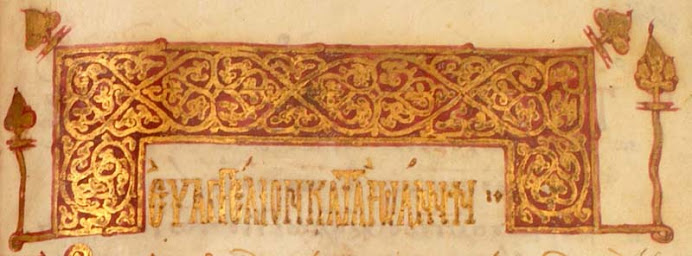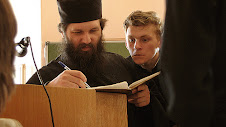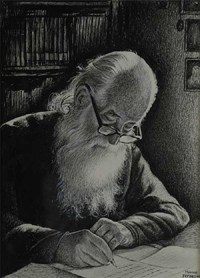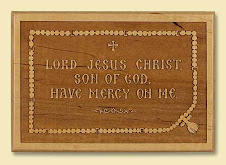
4. Elucidation of Christ’s Words By Examples from Life
a. Attention will be turned to analogies in the natural world for the higher perfection of Christian love.
b. In the relationship of a mother towards her children the exclusiveness of self-consciousness is modified. This can be seen not only in human mothers, but among animals as well.
c. Turning from the natural human to grace-filled Christian love, we see an even greater integral unity in spiritual love.
d. When the Lord likened the future unity of Christians to that of Father and Son, He had in mind not a pantheistic unity of personality, but rather the unity of many persons by nature. We see the same thing in the above examples from natural life and moral life: the life of a mother and infant is one life, since they have one nature; the life of the Apostle Paul is likewise one in Christ.
e. The saint has all his cares concentrated on Christ; all is life is a single striving that in itself rouses him to acts of love and toward God and neighbor.
f. If there had been no fall, all mankind would live in unity; but the fall consists in a self-loving individualization and a distortion of natural unity.
g. The content of a grace-filled nature is love, and the power which gives it life is Christ.
- How does Metropolitan Anthony employ analogies from the nature world to illustrate Christian love? How successful is he?
- What is the meaning of the distinction made between unity of personality [hypostasis] and unity of persons by nature. Why is such a distinction important?
- How is unity in love the basis for praying for one another, especially in praying for the reposed, asking the intercession of the saints, and baptizing infants?









7 comments:
This section is troubling. Met. Antony is using the terms 'nature/essence' and 'person/hypostasis' in ways that differ significantly from the established dogmatic usage; this would be comparatively harmless in a book that was dedicated to any other topic than elucidating the meaning and significance of the dogmas of the Church. In a book focussed on doctrine, such usage raises the possibility that for unwary readers the doctrines are obscured rather than clarified.
The main issue in this section is the sense of 'nature/essence'. His starting point is that human persons do not yet share one nature, but they may grow to be consubstantial through love. From a dogmatic perspective, this would seem to altar the meaning of 'consubstantial' in the Symbol, and negate Chalcedon's teaching of Christ's consubstantiality with us.
Furthermore, this section only amplifies the concerns that arose in this discussion already in the previous section, namely that Met. Antony expects humans to become one in essence with the Father (see, e.g., the top of p. 70). That he may have such a thing in mind is quite possible if unity of nature is the result of perfect love.
I hope what I have said above goes some way toward answering the questions you raised for this section, Felix.
I'm a bit perplexed by your problems with this section. I don't see how Metropolitan Anthony is using the terms nature/essence and person/hypostasis in irregular ways. Could you provide some examples of where you see him misusing these terms?
I also don't see the problem is asserting that human persons may grow consubstantial through love. It's basic Orthodox teaching that man already is consubstantial with his fellow man: we all share the same human ousia, despite our dividedness.
I'm afraid we're using different editions, so I've been unable to locate the passage where you think that the Metropolitan expects humans to become consubstantial with the Father. Could you use section and paragraph number, please?
Hi Felix; how can we become consubstantial with other human persons if we already are consubstantial with them? I should say, I readily agree that we can grow in unity with our fellow human persons through love; what I cannot see is that the doctrines of the Church are illuminated by calling this growth in unity a growth toward sharing the same nature.
A few examples of this use of nature/essence:
The paragraph beginning "When, in His farewell prayer, ..." (p. 70 in my edition) seems to be saying that Christ prayed that humans could become one in nature. He says this as if he believes they are not currently one in nature.
The paragraph beginning "If people did not fall, ..." (p. 71) seems to be saying that we lost our oneness of nature in the fall; he calls it "a distortion of the natural unity beyond all recognition."
The final paragraph of this section seems to be asserting that we shall move from being divided in nature to having the nature of the Church.
About the question of becoming consubstantial with the Father: the passage I have in mind is where he references 2 Pet. 1:4, that we shall become partakers of the divine nature. This passage may be read as agreeing with the traditional understanding of 2 Pet. 1:4, but in the context of the whole section where he is describing growth in love leading to consubstantiality, it becomes very uncertain.
Hi Nicholas - the Holy Trinity is united in many ways, many of which may be unfathomable by us. But the Nicene-Constantinopolitan dogma of the consubstantiality of the Holy Trinity refers first and foremost to the fact that both the Father and the Son (and the Holy Spirit) are divine, are fully God, are the same "kind of thing"; it does not refer to their unity in love. How do I know this? Well, was Arius denying that the Father and the Son are united in love? I expect he would completely agree that they are. The question was whether the Son is uncreated or created; whether He is God or a creature. The Fathers and the councils and the Church affirmed that the Son has the same nature as the Father, the nature which He eternally receives from the Father, the divine nature.
It is not merely an analogy or similitude to say that Peter and Paul are two hypostases with one nature; that's simply a statement of fact, using the terms in the same way. They are two distinct, complete persons, but both are perfect in their humanity, are perfectly human, have the complete human nature. They are consubstantial. Yes, the members of the Holy Trinity are united in many ways that Peter and Paul are not, including their union in perfect love. They are distinct persons and hypostases but not divided, while Peter and Paul are distinct and divided persons--divided in time and space, in matter, in their personal will and energies, in many ways. But this does not mean that they are not one-in-essence/consubstantial/homoousioi.
Note that the word "Godhead" comes from "God-hood", meaning simply "divinity". It refers to the divine nature. To say that the Father and the Son are one Godhead (it may be better to say "one in Godhead", I don't know the details of the usage of this word in English) is simply to say that both have the perfect/complete divine nature.
I won't address your second paragraph Nicholas, unless you want me to; I fear of dragging on and on and tiring our excellent host with a review of the basics of Orthodox dogma. Forgive me, Felix, if this is tiresome.
Forgive me. I guess I need to learn to keep my mouth shut : ). I've removed my comment.
Nicholas, I don't see any reason to remove your post; it was a perfectly reasonable comment. If the final words of my last post caused it, all I meant was that my posts tend to grow without end and ramble on, so I wanted to cut it short if no one was interested.
Post a Comment